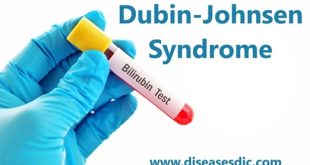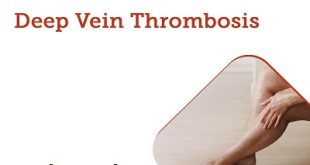Definition
Diabetic ketoacidosis (DKA) is a severe and life-threatening complication of diabetes. Diabetic ketoacidosis occurs when the cells in our body do not receive the sugar (glucose) they need for energy. This happens while there is plenty of glucose in the bloodstream, but not enough insulin to help convert glucose for use in the cells. The body recognizes this and starts breaking down muscle and fat for energy. This breakdown produces ketones (also called fatty acids), which cause an imbalance in our electrolyte system leading to the ketoacidosis (a metabolic acidosis). The sugar that cannot be used because of the lack of insulin stays in the bloodstream (rather than going into the cell and provide energy). The kidneys filter some of the glucose (sugar) and excrete it in the urine.
Pathophysiology
- This is the complication in diabetic patients with hyperglycemia and massive fatty catabolism.
- The primary substrate for the ketone bodies formation is free fatty acids from adipose tissue.
- This is due to the lake of insulin in uncontrolled diabetes mellitus.
- These free fatty acids are substrates for the formation of ketone bodies.
- These free fatty acids when reesterified in the liver then give rise to triglycerides and low-density lipoproteins.
- When the body cannot utilize carbohydrates or glucose cannot enter the cells.
- Ketones are formed when the energy to the body is provided by the fats.
- Ketone bodies are:
- β-hydroxybutyrate.
- The ketone bodies are the end product of fatty acid breakdown.
- The presence of ketones bodies in the urine indicates poorly controlled diabetes mellitus.
- When the body cannot utilize the ketone bodies and, these are produced in excess, is called ketosis.
- These are excreted in the urine and are called ketonuria.
- The elevated level of ketones in the blood is called ketonemia.
- This overproduction of the keto acids leads to acidosis or lower the blood pH.
Risk factors
Your risk of DKA is higher if you:
- Have type 1 diabetes
- Are under the age of 19
- Have had some form of trauma, either emotional or physical
- Are stressed
- Have a high fever
- Have had a heart attack or stroke
- Smoke
- Have a drug or alcohol addiction
Although DKA is less common in people who have type 2 diabetes, it does occur. Some people with type 2 diabetes are considered “ketone prone” and are at a higher risk of DKA. Some medications can increase the risk of DKA. Talk to your doctor about your risk factors.
Causes
DKA results from inadequate insulin levels that cause the fat cells to burn for energy. Under these conditions, ketones are released into the blood by the liver. In people with diabetes, an underlying problem often triggers the onset of DKA.
The following problems or conditions may contribute to DKA:
- An illness where the body produces higher levels of stress hormones (illnesses like pneumonia or a urinary tract infection have a counter-effect on insulin)
- Not sufficient insulin due to missed doses or more requirements
- Alcohol or drug abuse
- Less food intake caused by sickness, fasting, or eating disorders (bulimia, for example, increases the risk for DKA)
- Medications like corticosteroids and diuretics
- Pregnancy
- Heart attack
Symptoms of Diabetic ketoacidosis
Symptoms usually develop over 24 hours but can come on faster.
Signs of DKA include:
- Needing to pee more than usual
- Feeling very thirsty
- Being sick
- Tummy pain
- Breath that smells fruity (like pear drop sweets or nail varnish)
- Deep or fast breathing
- Feeling very tired or sleepy
- Confusion
- Passing out
DKA can also cause high blood sugar (hyperglycaemia) and a high level of ketones in your blood or urine, which you can check for using home-testing kits.
Diabetic ketoacidosis complications
DKA can cause complications such as:
- Low levels of potassium (hypokalemia)
- Swelling inside the brain (cerebral edema)
- The fluid inside your lungs (pulmonary edema)
- Damage to your kidney or other organs from your fluid loss
Very low potassium levels can cause severe problems. These include muscle weakness and heart rhythm problems. This may cause death. Cerebral and pulmonary edema can also lead to death. Your healthcare team will work to prevent these complications. They will watch you closely and carefully adjust your treatment.
Diagnosis and test
Diagnosis of diabetic ketoacidosis is made by a doctor after seeing the patient and running some laboratory tests. Following labs are ordered to make the diagnosis of diabetic ketoacidosis and its complications.
- Glucose levels in the blood (can be measured at the spot using a device known as a glucometer)
- Ketones levels in blood or urine (Ketones levels in urine can be measured using some special strips)
- Blood PH (a test which measures a number of acids in the blood) and Pco2 (a test which measures the amount of carbon dioxide in the blood)
- Serum HCO3 (a substance that neutralizes acids in the body)
- Serum electrolytes (a test which measures a number of certain chemicals like sodium, chloride, potassium in the blood)
- Serum Creatinine and urea (a test which is used to see if kidneys are functioning properly or not because diabetic ketoacidosis could affect a patient’s kidneys)
Treatment and medications
If you’re diagnosed with diabetic ketoacidosis, you might be treated in the emergency room or admitted to the hospital. Treatment usually involves:
Fluid replacement: You’ll receive fluids either by mouth or through a vein (intravenously) until you’re rehydrated. The fluids will replace those you’ve lost through excessive urination, as well as help dilute the excess sugar in your blood.
Electrolyte replacement: Electrolytes are minerals in your blood that carry an electric charge, such as sodium, potassium, and chloride. The absence of insulin can lower the level of several electrolytes in your blood. You’ll receive electrolytes through a vein to help keep your heart, muscles and nerve cells functioning normally.
Insulin therapy: Insulin reverses the processes that cause diabetic ketoacidosis. In addition to fluids and electrolytes, you’ll receive insulin therapy usually through a vein. When your blood sugar level falls to about 200 mg/dL (11.1 mmol/L) and your blood is no longer acidic, you may be able to stop intravenous insulin therapy and resume your normal subcutaneous insulin therapy.
As your body chemistry returns to normal, your doctor will consider additional testing to check for possible triggers for the diabetic ketoacidosis. Depending on the circumstances, you might need additional treatment.
For example, your doctor will help you create a diabetes treatment plan. If a bacterial infection is found, he or she might prescribe antibiotics. If a heart attack seems possible, your doctor might recommend further evaluation of your heart.
Prevention of Diabetic ketoacidosis
There are many ways to prevent DKA. One of the most important is the proper management of your diabetes:
- Take your diabetes medication as directed.
- Follow your meal plan and stay hydrated with water.
- Test your blood sugar consistently. This will help you get in the habit of making sure your numbers are in range. If you notice a problem, you can talk to your doctor about adjusting your treatment plan.
Although you can’t completely avoid illness or infection, you can take steps to help you remember to take your insulin and to help prevent and plan for a DKA emergency:
- Set an alarm if you take it at the same time every day, or download a medication reminder app for your phone to help remind you.
- Pre-fill your syringe or syringes in the morning. That will help you easily see if you missed a dose.
- Talk to your doctor about adjusting your insulin dosage levels based on your activity level, illnesses, or other factors, such as what you’re eating.
- Develop an emergency or “sick day” plan so you will know what to do if you develop DKA symptoms.
- Test your urine for ketone levels during periods of high stress or illness. This can help you catch mild to moderate ketone levels before they threaten your health.
Seek medical care if your blood sugar levels are higher than normal or ketones are present. Early detection is essential.
 Diseases Treatments Dictionary This is complete solution to read all diseases treatments Which covers Prevention, Causes, Symptoms, Medical Terms, Drugs, Prescription, Natural Remedies with cures and Treatments. Most of the common diseases were listed in names, split with categories.
Diseases Treatments Dictionary This is complete solution to read all diseases treatments Which covers Prevention, Causes, Symptoms, Medical Terms, Drugs, Prescription, Natural Remedies with cures and Treatments. Most of the common diseases were listed in names, split with categories.








if someone having diabetes and it as affecting sight what can some one take to cure it ,2 what can some eat or drink
Laser treatment can keep eyesight loss from getting worse, which is important to prevent vision loss or blindness.
my heart stuttering wen I eat solid food
Please consult a cardiologist for better consultation.
ur information is so healpfull to me bcz i always used ur page to give emergeny treatment to my patient ……………..
does someone with diabetes stop taking those medicine.thats a 10yr child
Consult a doctor to check if he/she can pasess the criteria to stop with the medicine.
sharing food with the one having will it spread
No, it won’t spread to others when sharing food.
Great post! Thank you for the insightful article. I would like to include a little bit more information that long-term hyperglycemia during diabetes causes chronic damage and dysfunction of various tissues, especially the eyes, kidneys, heart, blood vessels, and nerves.
Good day. I have a question: While on the process of doing a blood sugar test, does the 8-hour period of fasting include no drinking of water?
It is important that a person has not had anything to eat or drink other than water for 8 to 10 hours before a fasting blood glucose test.
can diabetes stop? which other drink can a diabetic patient take that will not increase the sugar level
There is no cure for diabetes, but it can go into remission. People can manage it with medication and lifestyle changes.
whats the normal sugar in our body?
For the majority of healthy individuals, normal blood sugar levels are as follows: Between 4.0 to 5.4 mmol/L (72 to 99 mg/dL) when fasting. Up to 7.8 mmol/L (140 mg/dL) 2 hours after eating.
how to diagnose glucose
A fasting blood sugar level from 100 to 125 mg/dL (5.6 to 6.9 mmol/L) is considered prediabetes. If it’s 126 mg/dL (7 mmol/L) or higher on two separate tests, you have diabetes. Oral glucose tolerance test. For this test, you fast overnight, and the fasting blood sugar level is measured.
what foods can I eat as a type 1 diabetic and how much do i eat per day for breakfast, lunch and dinner.
Foods to limit
Sugar and processed carbohydrates make blood sugar rise and fall quickly. Limit how much and how often you eat foods high in sugar and processed carbohydrate, such as:
*Chips
*Crackers
*Candy
*Cookies
*Ice cream
*Cakes/cupcakes
*Pies
Breakfast cereal and flavored oatmeal with:
*Less than 10 grams of sugar per cup
*3 or more grams of fiber per serving
how must I bring down my level sugar if I tested it.
As a first step kindly consult a doctor to check the level of your blood sugar. Based on your sugar level treatment may vary.
please Doctor,which food and fruit is suitable for this illness?
Take your insulin and diabetes medicines. · Drink extra fluids to prevent dehydration. · Try to eat as you normally do, with a focus on healthy food choices.
Note: Kindly consult a nutritionist for appropriate diet plan for Diabetic Ketoacidosis.